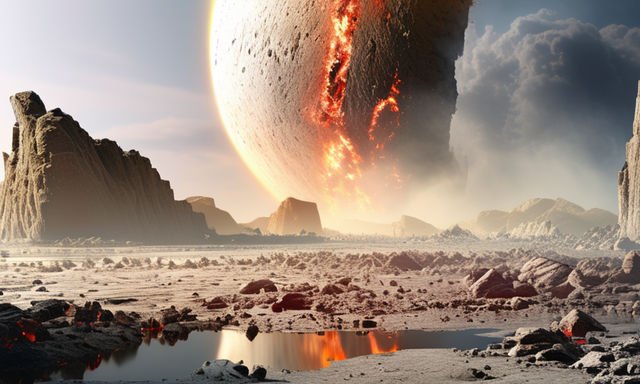The Heart of Pluto

Souce
Since the cameras of NASA's New Horizons mission discovered a large heart-shaped structure on the surface of Pluto in 2015, that heart, that structure became the hallmark of the dwarf planet, however, what for us It is a beautiful image for scientists, it was somewhat puzzling how this geological structure was formed.

The researchers who have done this work, the initial history of Pluto was marked by a cataclysmic event that formed Sputnik Planitia, they have calculated that this region was formed by the collision with an object, possibly a giant comet of around 640 km in diameter. , it is an enormous size for a comet, it was not a direct impact, the giant comet would have destroyed small Pluto if it had impacted directly, the elongated shape of Sputnik Planitia and its location on the equator suggest that the impact was an oblique collision and also At a relatively low speed, this meant that the core of the Giant Comet impactor did not sink towards Pluto's core but remained intact as a speck.

A low-speed impact of a comet 640 kilometers in diameter is something very strange. If it had been direct, it would have surely destroyed Pluto. An impact on Earth of that size would have caused a mass extinction, the entire Earth's crust would have melted; This impact at low speed is possible because far from the Sun in the distant solar system, the speeds are much slower, the objects go much more slowly than in the regions where the Earth is located, so the collisions are not as brutal.
Thank you for visiting my blog. If you like posts about #science, #planet, #politics, #rights #crypto, #traveling and discovering secrets and beauties of the #universe, feel free to Follow me as these are the topics I write about the most. Have a wonderful day and stay on this great platform :) :)
Congratulations @jorgebgt! You have completed the following achievement on the Hive blockchain And have been rewarded with New badge(s)
You can view your badges on your board and compare yourself to others in the Ranking
If you no longer want to receive notifications, reply to this comment with the word
STOPCheck out our last posts:
Thanks for your contribution to the STEMsocial community. Feel free to join us on discord to get to know the rest of us!
Please consider delegating to the @stemsocial account (85% of the curation rewards are returned).
You may also include @stemsocial as a beneficiary of the rewards of this post to get a stronger support.